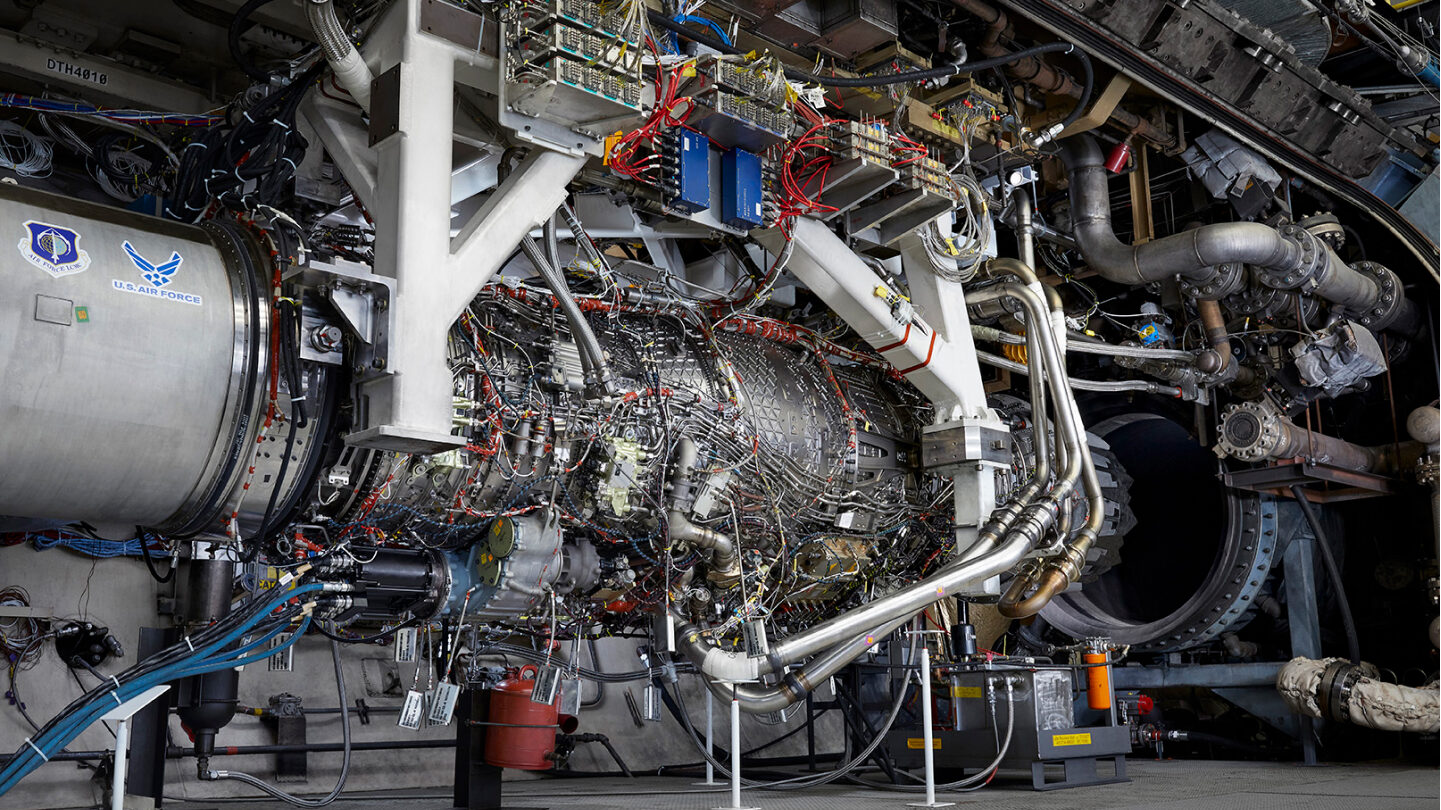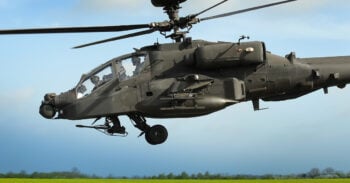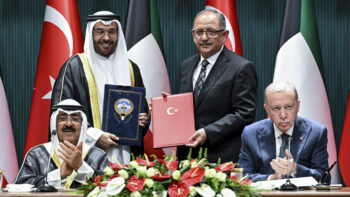
General Electric’s proposal for the Adaptive Engine Transition Program, the XA100. (General Electric)
DAYTON, Ohio — The Air Force has decided to fund both Pratt & Whitney and GE Aerospace at least through the prototype phase to make an engine for the service’s forthcoming Next Generation Air Dominance (NGAD) fighter, reversing earlier plans to ax one of the competitors earlier.
“We still have that opportunity to do a downselect if we start seeing… a huge separation between the two. But right now with the way we’re funded, we think we can carry both through prototype, and both are leaning in fully. And so then we’ll let the prototype and test do the evaluation,” Air Force propulsion chief John Sneden said Tuesday.
Last year at the Life Cycle Industry Days conference here, Sneden said that budget constraints by the end of 2024 would force officials to eliminate either Pratt & Whitney or GE Aerospace from the Next Generation Adaptive Propulsion (NGAP) program, the formal name of the effort to build the NGAD fighter’s engine. But now, Sneden said he’s confident the Air Force can support both vendors through the prototyping phase, which he said is critical to maintain the health of the propulsion industrial base.
“The problem with it is that there’s not many companies in the world that can do this,” he said. “My focus is really on just maintaining what we currently have. And that means competition wherever possible, and continuing to fund both vendors for as long as we possibly can.”
Under NGAP, the service last year issued contracts to Pratt and GE — as well as Boeing, Lockheed Martin and Northrop Grumman — to ensure that propulsion offerings can fit into any airframe ultimately selected. The service plans to make an award for NGAD in 2024, and following Northop’s announcement that it won’t bid as a prime, Lockheed and Boeing are assumed to be competing to make the fighter itself.
When the contract was issued, “it was just to make sure that there was an interface methodology between the airframe company and the propulsion company,” Sneden said.
And Congress appears poised to fully provide the service’s $595 million fiscal 2024 funding request for NGAP, according to drafts of appropriators’ legislation. As the prototyping phase approaches in the 2024-2025 timeframe, both companies will have to share their designs — and as of right now, Sneden expects both will be worthy of fielding as prototypes.
“I think what we need to do is, let’s see where both vendors are at. And if they’re both tracking basically equally, or close enough to each other — which they are right now, they’re both doing great — then we would go into prototype and test,” he said.
After that, “we can make a downselect from there,” he added, though Sneden did not state specifically when that decision might be made. “We will let the results speak for themselves as we get to prototype and test.”
AETP Funding
Air Force officials are looking to use a range of new tools to shape the design of the NGAD’s engine — technology that will draw upon the Air Force’s Adaptive Engine Transition Program (AETP), where Pratt and GE each built prototype adaptive engines tailored to the F-35.
In March, Air Force Secretary Frank Kendall announced the service would seek to end funding for that engine program and instead fund an upgrade to the Pratt-made F135. Congressional appropriators seem largely in agreement: Senate appropriators provide no funding for AETP, and while House appropriators provide $150 million for the program, the chair of the House defense appropriations subcommittee previously told Breaking Defense that the committee is adamant that the incumbent F135 engine should not be swapped out.
That money, according to the House committee’s legislation, is “to ensure coordinated design efforts with NGAP,” emphasizing that “this increase is not intended to incentivize the Air Force, or any other Service, to create an alternative engine program for the F-35.” Senate appropriators would similarly separately provide $280 million for advanced engine development efforts specifically tailored to features like advanced manufacturing techniques, stating that lawmakers are “concerned that a skilled workforce across the domestic military aircraft engine industrial base will degrade if sufficient work and the requisite funding are not available.”
House authorizers, however, would seek $588 million for AETP, funding that Tactical Air and Land Forces subcommittee chairman Rep. Rob Wittman, R-Va., previously said in an interview with Breaking Defense could keep a new F-35 engine in play. Wittman’s counterparts in the Senate Armed Services Committee, however, would seek no further funding for AETP.
“Everything that we’re seeing right now is that NGAP will be funded, but the question is really whether or not AETP will be. And so currently, our activities are really focused on maturing the adaptive engine technology with the remaining budget that we have left for AETP,” Sneden said.
Sneden said officials are working to “take all of those activities, and we’ll port over the technology towards NGAP,” listing off key innovations like adaptive turbofans and materials with improved thermal management properties.
Asked about Secretary Frank Kendall’s comments that continued funding for AETP could be a waste of taxpayer dollars, Sneden explained that “if the decision has been made to not put AETP technology into the F-35, if we continue to lean into that activity, then that’s a waste. So why would we continue to spend money on AETP specifically as it relates to the F-35.
“What I’m offering is that some of the things that we’re currently doing on [AETP]… have portability into the NGAP program,” he continued. “So if we get money, I think the focus will actually be, where can we spend the money on advanced engine development activities that will help us continue to mature adaptive engine tech towards the NGAP baseline, as opposed to putting adaptive engine tech in the F-35.”
Kuwait’s new ‘executive protocol’ with Turkey could mean new weapons, training
“As the Kuwaitis work to modernize their military, Ankara eyes the lion’s share of Kuwait’s defense procurements,” analyst Ali Bakir told Breaking Defense. “Turkey is willing to offer a range of its modern, cost-effective and highly capable weapons…”


























